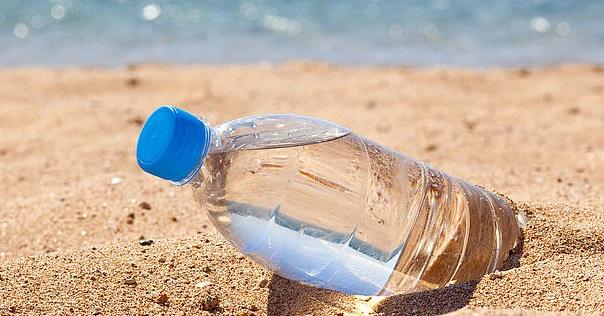
Our earth is rightly called the blue planet because of its abundant store of surface water. However, only 2.5 percent of it is freshwater, with most of it locked up as snow and permafrost, leaving only 0.3 percent of that in liquid form. And with the heavy agricultural and industrial use of fresh water, and the resulting pollution, very little of it is left for our drinking water needs.
To satiate the thirst of the burgeoning human population, we need to tap into our vast oceans and seas. Even coastal countries and island populations are reeling under severe scarcity of potable water. It is a case of “water, water, everywhere, but not a drop to drink.” The high salt content of sea water is the main deterrent here.
The salinity of marine water averages around 3.5 percent. It is like 35 grams of salt dissolved in a one liter bottle of water! Drinking such salty water defeats the very purpose of drinking water, as it neither satiates your thirst, nor hydrates your body. In fact, it will cause severe dehydration and death.
While there are many filtration and disinfection techniques such as sand and charcoal filtration, chlorination, and ultra-violet radiation to make contaminated fresh water into clean drinking water, it is not possible to remove the salt from the water through the above measures. But the salt must be removed.
Ultra-Efficient Water Filter Fits In Your Pocket!
Many coastal and island countries like UAE, Japan, Spain and Algeria have invested heavily on desalination plants that transform seawater into clean, potable water.
Thermal distillation
The traditional method of getting drinking water from seawater is by distillation. It involves boiling the saltwater, collecting the water vapor and condensing it by cooling. As you may already see, both boiling and cooling require high energy expenditure which makes this an expensive affair. It can be feasible in large ships and heat generating industries, where the heat normally generated is recycled to distil water.
Thermal distillation as a survival technique can be easily done on a small scale with no specialized equipment. All you need is a sauce pan with a domed lid and a smaller vessel to collect the purified water. Take the salt water in the saucepan and place the smaller vessel in the middle of the pan. Keep it on the fire and cover the pan with the upturned lid in such a way that the knob of the lid is right above the vessel collecting the distilled water (in other words, the lid is upside down). The water vapor condensing on the lid will drop into the vessel. Adding cold salt water to the top of the lid will accelerate the condensation process.
A great advantage of thermal distillation is that you get pure drinking water in one go. When water turns into vapor or steam, it leaves behind all the soluble and insoluble impurities behind, including disease-causing microorganisms. But doing this on a large scale to feed towns and cities is an expensive option that may be viable only for oil-rich Gulf countries.
Solar distillation
In solar distillation, the water vapor is formed by the evaporation of water by solar heat. This process that naturally takes place on the surface of water bodies is the source of all the precipitation we receive, be it rain, sleet or snow. We just borrowed this idea from nature to distil salt water into pure drinking water. Solar distillation equipment, called a solar still, is an essential outfit for every seafarer. This simple mechanism collects evaporation from the surface of the sea on a plastic dome that channels the condensed pure water into a reservoir. The water can be drawn out through a tube attached to the reservoir.
In an emergency, you can make small amounts of drinking water for personal use from salt water, murky river water or even your own urine. The simplest DIY way would be to saw the bottom off a large soda bottle of 2 or 3 liter capacity and upturn the raw edges of the remaining bottle inward to form a small reservoir at the bottom. You can keep it in the sun over a can, rag or your socks soaked in salt water or urine. The evaporation will condense on the sides of the bottle and flow down into the reservoir. You can pour out the now-filtered water through the top, but do so carefully.
Story continues below video
Since the only energy input is sunlight, all we need is ample sunshine present on our beaches and deserts. However, the process is slow and inadequate to meet the drinking water needs of large populations. Moreover, large areas need to be covered up for the collection of evaporation, not to mention the inefficiency of the arrangement on cloudy days and cold seasons. A solar distiller designed for home use, covering an area of 10 square feet, will give you approximately 1 ½ gallons of drinking water each day in summer, but half that amount in winter, grossly insufficient for a family of more than 3-4 members.
While efforts are afoot in Chile, Saudi Arabia and elsewhere to combine solar energy and photovoltaic technology to scale up drinking water production, and the involvement of big companies like IBM raise hopes, the search for better solutions are still on.
Reverse osmosis
Osmosis is a process by which water passes from an area of low concentration of salts into that of high concentration across a semi permeable membrane. This is how water moves in and out of plant and animal cells. In reverse osmosis, by applying pressure, the water is pushed across a membrane that allows only the passage of water molecules.
The membranes used in reverse osmosis (RO) plants are a combination of new age materials. A micron-thick layer of polyamide that acts as a filter is supported by a layer of microporous polysulfone. Compared to thermal distillation, RO systems are more cost-effective. The speed of the filtration depends on the pore-size of the membrane and the pressure applied. It has high scalability, too, with many countries investing heavily on it to meet their drinking water needs.
While we can filter out most of the salts and chemicals as well as biological contaminants in the water through reverse osmosis, the filtered water obtained is just barely comparable to distilled water in purity. Several stages of filtration are required to prevent clogging of the filters. Frequent reverse flow is required to clean up the membranes. Disposal of the highly concentrated effluent from the plant is another issue.
In the absence of a more cost-effective and scalable technology, RO continues to be the preferred filtration method to turn salt water into drinking water.
Forward osmosis
Instead of pushing water out of the salt solution, forward osmosis makes use of highly concentrated salt solution, usually edible sugar syrup, to draw in water through the osmotic membrane. Hydration bags employing this technology are a must in survival kits of backpackers and seafarers. When the bags are kept in the sea water for sufficient time, you get a sugary drink that will provide some sustenance besides hydration. You can make this drink out of your own urine in an emergency.
The desalination plant set up in Oman by Modern Water uses forward osmosis. To obtain pure drinking water from FO, a second filtration step, usually RO, is used. One advantage of FO prior to RO is the higher purity of water obtained, especially where the feed solution is highly contaminated.
There are other promising technologies in the pipeline:
Graphene filters
A single-atom thick layer of carbon called graphene is found to be partial to water molecules. When graphene is oxidized to form tiny pores, it acts as a filter, drawing in water into capillaries formed by several layers, while blocking other molecules, including those of gases. The researchers are aiming to design a device for personal use that will allow you to draw pure drinking water from sea water by just hand pumping a few times.
Electrodialysis
Researchers from MIT are touting shock electrolysis as a more efficient technique to get drinking water from salt water. They are making sodium and chlorine ions in the salt solution by applying an electric field and then letting them pass through the membranes, instead of water molecules. By keeping a porous filter with a pore size of 0.5 microns close by, they hope to make this a cheap and compact, one-step purification process to remove salt and other contaminants from the water.
As we become more technologically advanced, it seems likely that we will find new and exciting ways to turn the salt water that surrounds us into the fresh water we so desperately need to survive.
Do you have survival tips for drinking salt water? Leave your reply in the section below:











